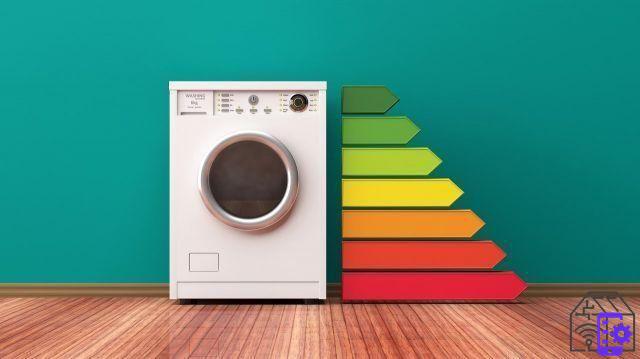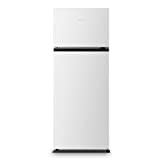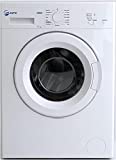
The European Union has established a new one labeling for the energy efficiency class of household appliances. The new system makes it easier and more immediate to understand what the average consumption of your new TV, washing machine or any other electronic device you want to buy. Effective from March 2021, it allows you to save energy and think about the environment. Here's how it works.
- How the new labels work
- From A to G
- How to read the new labels
- Entry into force and double labels
- Examples: the new energy classes for refrigerators and washing machines
- Conclusions: what changes
How do the labels for the energy class of household appliances work
The upcoming new system aims to deliver clear and easy to read information about energy consumption of an electronic device. It is therefore needed for the informed choice of the consumer, who has the right to have precise information on what he buys. The model harmonises the labels of all European countries and simplifies the labeling we were used to, which also matched the letters and colors of + (for example, class B ++ colored in light green). But in addition to making it easier to read, it uses the technology of QR Code and new ones universal pictograms to give extra information than in the past.
Back to the past: grades A to G
The first European regulation on the energy class of household appliances dates back to 1998 for refrigerators and freezers. In this case some were introduced energy labels from A to G: seven colored class from green (more efficient) up to red (less efficient).
In 2003 many other appliances arrive (from washing machines to TVs) but the sorting also introduces two extra classes: A+ and A++. This increase in classes is not easy for the consumer to read. Especially because not all appliances assign the same value to the +: an A +++ refrigerator is 60% more efficient than an A, while an A +++ washing machine is 32% more efficient than an A.
To avoid these confusions, the new system introduced from March 2021 provides for only seven classes of energy efficiency, from A (more efficient and colored green) up to G (less efficient and colored red). No intermediate categories. Furthermore, the legislation provides that for household appliances that provide a smaller gap between classes the labels may be shortened: A to C, for example.
How to read the new energy class label for household appliances
The new labeling is in continuity with the previous one: there is still the color scale, the label is familiar to those accustomed to the old one. But it introduces simplifications and additional information for the buyer.

- The main scale goes from A to G., with no intermediate classes. Colors go from green to red. The transition from one level to another depends on the appliance. Upon introduction, class A is left empty to stimulate innovation. When enough appliances end up in the first two categories (or after 10 years), they settle at the community level new efficiency thresholds. This should incentivize innovation. The ladder can be shortened for categories of household appliances with less than seven energy classes.
- On the right you will find the black and white scale for noise (only in some appliances), that goes and A to D.
- Under the two scales you will find the indication of average consumption per year (or per cycle), indicated in kWh (kilowatts per hour).
- Below you will find gods pictograms, specific for each class of household appliance (for example the average water consumption for a washing machine, etc.)
- At the top right you will find a QR code. By scanning it with the smartphone camera, you can access the data in the catalog EPREL, where manufacturers must register product information.
The new system not only simplifies but provides new information: from noise to all the technical details of the device. But above all, the average consumption in kWh allows you to know how much the purchase impacts on the electricity bill: just multiply by the cost of energy.
Bestseller no. 1
 Hisense MTM55206F Free-standing Double Door Refrigerator ...
Hisense MTM55206F Free-standing Double Door Refrigerator ...
- Double door refrigerator
- Capacity 206 L
- Integrated handle
When the new energy labels come into effect
In addition to deciding the new energy labeling of household appliances, the European Union has set deadlines within which the manufacturers must replace the current classes. Many products are already on the market with the old labeling. So you can expect to see the old labels with + and without the QR code for some time yet.
The EU regulation 1369 of 2017 gives in general six years of time for the manufacturers to change labels, plus 18 months because they arrive in stores. Some white goods (refrigerators, washing machines, dishwashers) instead have shorter times: within 15 months producers must have the new labels, plus 12 months for products already displayed in the store. The boilers they are even 12 years old.
However, times are getting much tighter for any "Rescaling". In fact, when the energy classes change (because there are too many in class A and B, or every 10 years), retailers have two weeks time to change the label. Task of the manufacturer to supply an additional label.
The Telegram channel with the best offers of the day has arrived. Sign up here
Double energy efficiency label
Due to this initial transition period, you may find at least the first few months two labels of different energy classes. This is not an error but an act of transparency towards the buyer. You can in fact see the two generations of labels, knowing both classes and how they have changed. This should also get us used to the transition.

Average consumption and energy class for various appliances
For some appliances (white goods such as refrigerators, washing machines, etc.) the classes and values are already determined to divide them into energy classes. These devices should in fact have the double label immediately. Here, as an example, we report the energy classes and consumption of refrigerators e washing machines, with an average annual price (assuming an average energy cost of about € 0,20 per kWh). You can find more examples in the PDF on ENEA energy labels, which we used as a source for the data in this article.
However, keep in mind that new labels always indicate the i am spending half the kWh: just look on your bill how much energy costs you and multiply by that value. We all have a calculator on our smartphone anyway.
Refrigerators
| A | consumption below 95 kWh / year | cost under € 18 |
| B | by 119 to 96 | from 23 to 18 € |
| C | by 149 to 120 | from 28 to 23 € |
| D | by 186 to 150 | from 35 to 28 € |
| E | by 233 to 187 | from 44 to 35 € |
| F | by 291 to 234 | from 55 to 44 € |
| G | above the 291 | above the euro 55 |
Washing machines
| A | consumption below 47 kWh / 100 cycles | cost under 9 euros |
| B | by 54 to 48 | from 10 to 9 € |
| C | by 62 to 55 | from 12 to 10 € |
| D | by 72 to 63 | from 14 to 12 € |
| E | by 82 to 73 | from 16 to 14 € |
| F | by 92 to 83 | from 18 to 16 € |
| G | sopra i 92 kWh | above the euro 18 |
Conclusions: what changes
With the new labels it should be much easier to understand the impact of household appliances on the bill and the environment. The scale from green A to red G is used to indicate how much an appliance consumes compared to the category average. Furthermore, for some devices we can also know the noise level, on a scale from A to D.
Il I am spending half the kWh can give us a precise idea of the impact of our new purchase on the bill. THE pictograms give additional information that may be of interest and varies according to the appliance. Finally, the QR code it can be scanned to have all the additional information that may be of interest to us.
With these new labels we should be more informed (and pollute less). Some companies have already started the transition (LG, Candy and Hisense have already talked about the excellent results with the new energy classes). But soon there new labeling will be the norm: we hope that this article of ours will help you in the passage.
OfferBestseller No. 1 ATLANTIC - Atlantic GEMMA ECO-LINE.Y washing machine 6kg. 1000 ...
ATLANTIC - Atlantic GEMMA ECO-LINE.Y washing machine 6kg. 1000 ...
- Porthole 44 cm
- Capacity 6 Kg
- Number of programs 15 - Delay timer



























